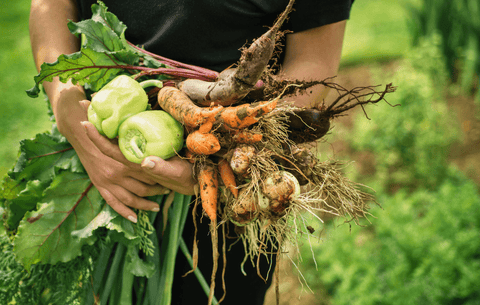If you're looking to start a garden, raised garden beds might be just what you need. Not only do they improve drainage and soil quality, but they also provide easier access and can be customized to fit any space.
1: Find the perfect spot
Does the area receive adequate sunlight during the day?
Does the area have good drainage?
Is the area easily accessible for watering and tending to your plants?
Food for thought:
- Consider the orientation of the garden bed to maximize sunlight.
- Look for a spot with a slight slope or add soil amendments for proper drainage.
- Consider proximity to water sources for easy watering.
2: Plan your layout
How much available space do you have in your garden?
Does the idea of one or two large beds suit your style or would you want to get creative arranging several smaller ones?
Is the area level, or can it be leveled?
Is the area large enough for comfortable access?
Food for thought:
- Consider leaving enough space between the beds for comfortable access and movement.
- Use companion planting to maximize space and increase yield.
- Utilize vertical space with trellises or hanging plants.
3: Choose your beds
What do you want to grow? Are you imagining fresh flowers for your space, or fresh herbs and ready-to-pick veggies for your culinary creations?
Do you find bending down difficult, or are there any physical limitations you may have that need to be considered? Would a higher garden bed reduce strain, or are you most comfortable working close to the ground?
Are there any potential pests or animals that a taller bed could keep out?
Food for thought:
- Some vegetables (like parsnips and squash) are deep-rooted and may not grow optimally in a shallower garden bed.
- If pests are a concern, a taller garden bed may help deter certain pests (like rabbits and slugs) from reaching your plants.
- Consider companion planting with flowers to attract beneficial insects and repel pests.
4: Prepare for your bed
Is the area clear of grass, weeds, debris? Does it need to be leveled?
Do you know where to get seeds, seedlings, or bulbs? Will your seeds require propagating before being planted? Will you need trellises or support structures for your vegetables?
Have you decided on the best soil mix and fillers for your garden bed? Do you want to have a base layer to keep weeds at bay?
Food for thought:
- Your local garden center may carry a soil mix specifically designed for raised beds, ensuring optimal drainage and fertility.
- A base layer isn’t essential, but it can help keep the weeds out! Especially for taller garden beds, it may be something to think about. You can use your recyclable packaging and/or anything you’d like. Choose options that are non-toxic and safe to grow on top of without the risk of leaching.
5: Assemble your Raised Garden Beds and get planting!
This one’s easy, all you’ll need is a screwdriver!
Remember to plan for regular maintenance, like watering and weeding, and set up a schedule that works for you. Happy gardening!


